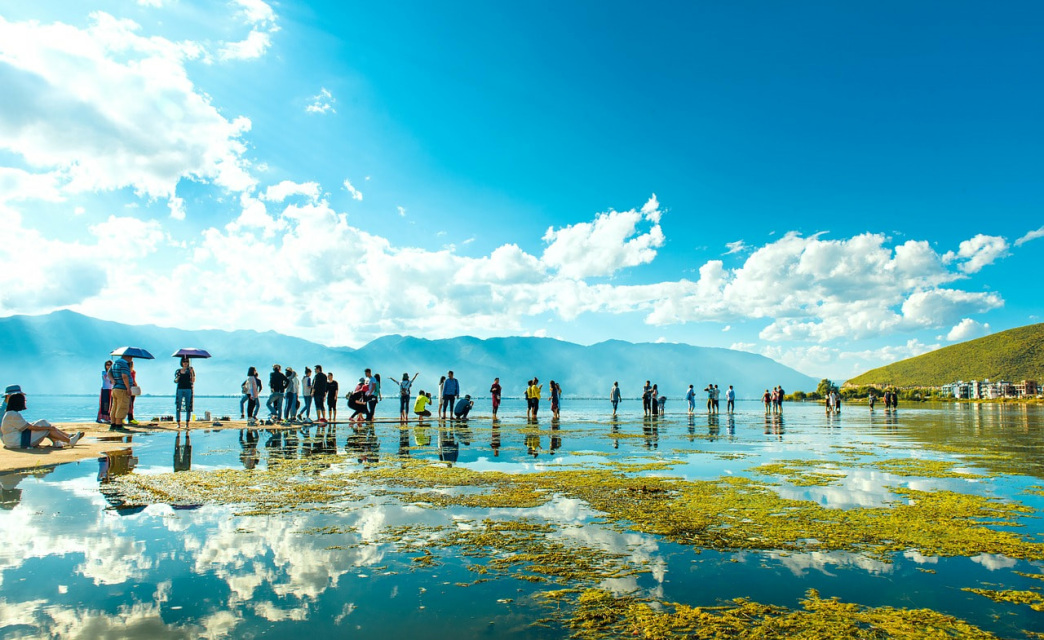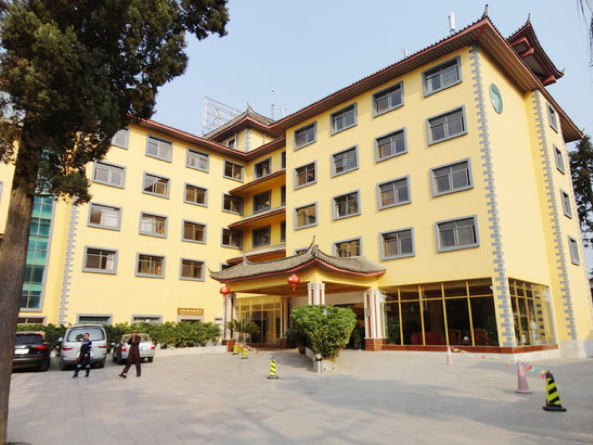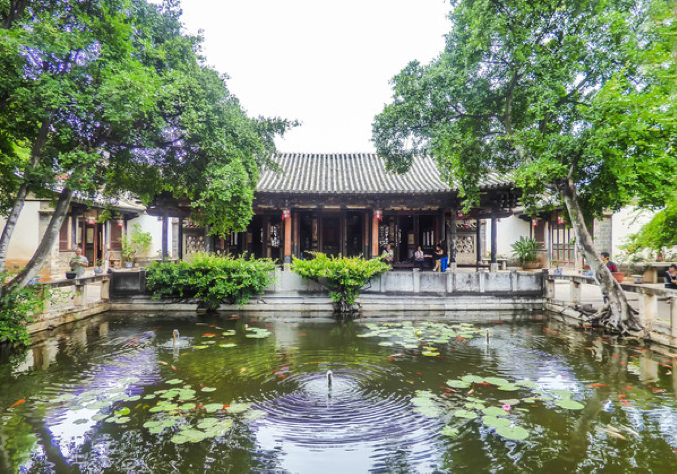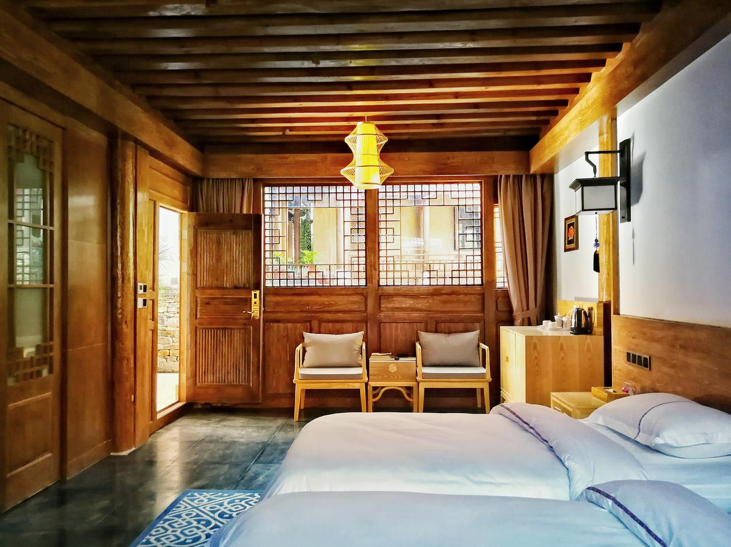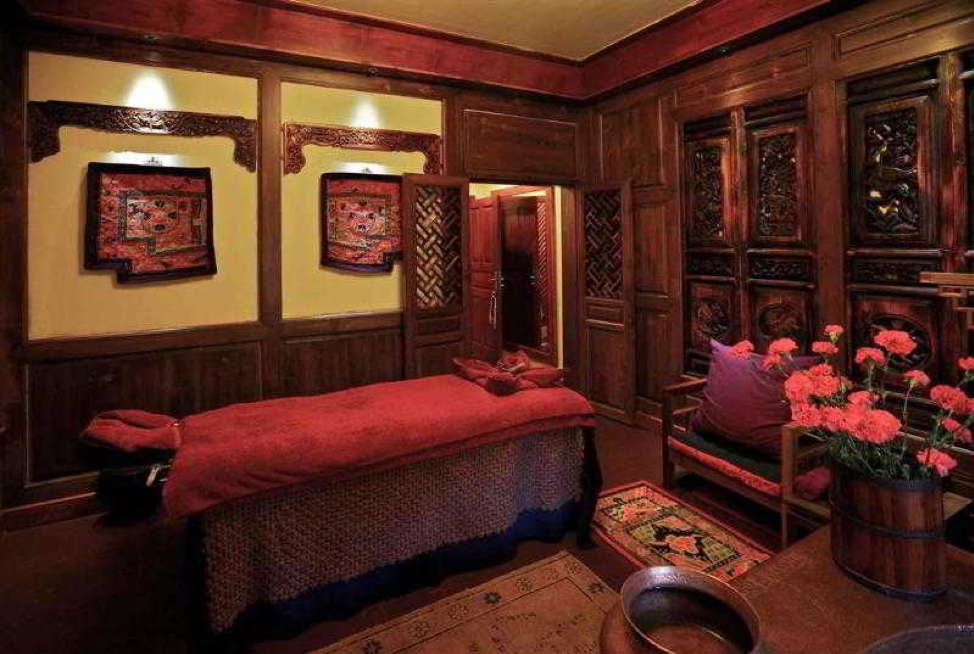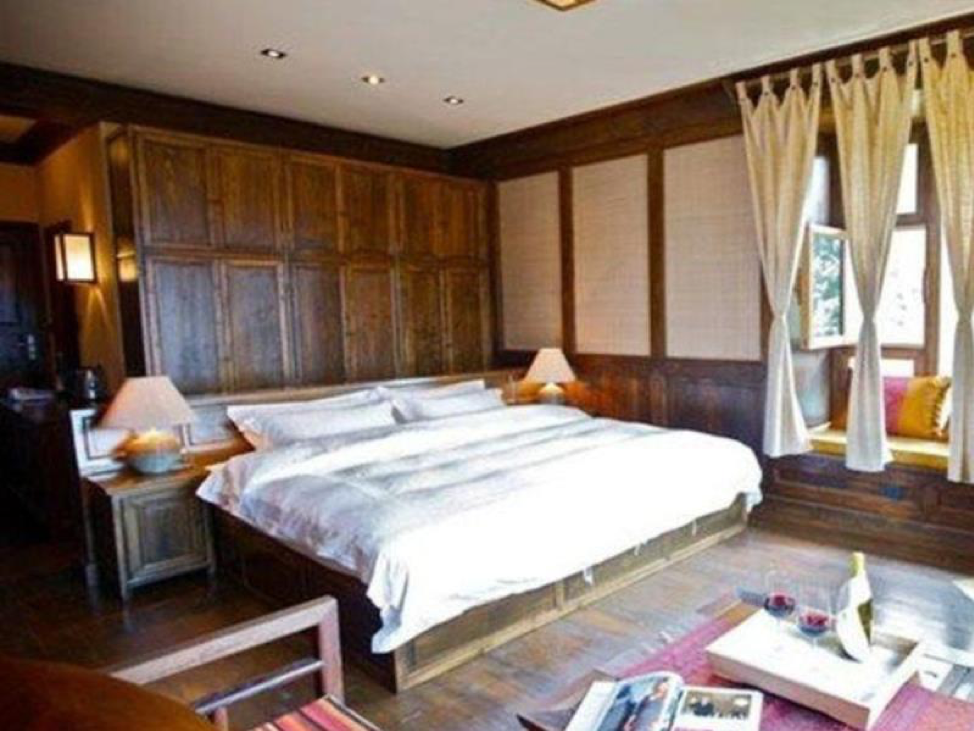Yunnan in the Summer Months
$0.00
Unavailable
per item
Highlights:
- With its soaring landscapes and charming villages, Yunnan showcases its incredible tapestry of landscapes on this suggested itinerary.
- Visit iconic sites including terraced paddies, Tiger Leaping Gorge and Songzanlan Temple. This is not for the first time traveler to China but someone who wants to immerse themselves in a particularly interesting part of the country.
- This program features deluxe and best available hotels, Private guides, full breakfasts daily, seven lunches and four dinners.
SKU:
Explore: Yunnan
Customizable Itinerary - 17 Days (from $5,783 / person)
Day 1: Depart USA
This morning you will leave for China and Kunming the capital of Yunnan. You can connect in many cities like Beijing or Hong Kong and likely arrive in the evening.
Day 2: Arrival in Kunming
Upon arrival you will be met by one of our drivers and taken to your hotel where the rest of the day is left open.
Day 3: A Day in Kunming
Like the residents you will make an early visit to Green Lake Park where people start their day with tai chi or qigong as physical exercise or some mental exercise with a game of GO( an ancient Chinese board game) or Mahjong. You will be taken to visit two temples, Yauntong Temple founded during the Tang Dynasty in the 7th Century and the Golden Temple, so named because of the gold leaf covering the main pavilion. You then are given a guided tour of the Yunnan Provincial Museum which provides insight into the multi-ethnic nature of the region. Of special interest is the beautiful collection of finery and traditional dress along with an explanation of popular art forms. In the evening you will have dinner at Stone House restaurant, a beautiful stone dwelling that has been converted into a restaurant serving both local and (surprisingly) Italian specialties. We would go with the local specialties since we suspect that none of the chefs have studied in Italy.
Day 4: The Rice Terraces of Yuanyang
This morning will be spent traveling to Yuanyang which is renowned for its rice terraces. En route you will stop at a Hui restaurant before arriving in the afternoon. The Yuanyang rice terraces are considered the most beautiful in China. Cascading down the mountainside through bamboo canals, the water transforms the mountain face into a truly wonderful sight, giving the impression that the rice terraces are steps for giants leading to the mountain top. For the most adventurous there will be a local delicacy of eel which are utilized in the rice production process. Just before the rice is harvested, eels are added to the paddy fields saturated with water to facilitate the harvest. After checking in to the hotel your guide will take you to Laihuzui (the Tiger’s Mouth) to enjoy the sunset over an endless panorama of rice terraces.
Day 5: Sunrise at Duoyishu
You have the recommended option of waking up early to travel to the best site for watching the sun rise over the rice terraces. You then return to the hotel for breakfast. You then visit the local market of the Hani Minority village. The number about 1.5 million and are mainly found in Yunnan. They are famous for their mastery in the art of rice terrace sculpting and drainage systems. Often living in rugged areas, where fertile land is hard to find, the Hani have adapted their farming methods and transformed 26,000 acres of hillside into arable land. You will take a scenic walk through the rice terraces finishing in Badi where you get to view a stunning sunset to compliment the morning sunrise.
Day 6: Jianshui and the Family Estates
Start you day with a visit to the ancient chines garrison town of Jianshui which is home to a Confucius Temple known for its green lotus pool and considered one of the most beautiful in all of China. You will then visit two family estates built in the 19th Century. The Zhu estate is located in the heart of the old town and is one of the most stunning examples of traditional housing in the entire county. An intricate labyrinth of more than five acres of bamboo groves, pavilions, courtyards and bandstands, it is entirely concurrent with the mental image of Imperial China. The estate is, today, a hotel (yours as it happens), but its old-world charm is well protected. The Zhang estate is located in Tuanshan around ten miles from Jianshui. The village is an interweaving lattice of avenues that hide the former residences of merchants who made their money in the salt trade. The Zhang Estate, with its square courtyards, sculpted doors and richly decorated friezes is the best example of such a house. Finish your day at Twin Dragon Bridge, one of the oldest bridges in China.
Day 7: A Picnic in the Black Stone Forest
Start your day with a visit to the Black Stone Forest which is about ten miles from the town of Shilin. While this maze of ‘stone trees” is fascinating, it’s also easy to get lost in so it’s imperative to always follow the guide. You will stop for a picnic along the way before returning to Kunming for an overnight stay.
Day 8: The Charming Houses of Dali
In the morning you will meet your guide and head to Dali which is the home of the Bai minority and was once the stronghold of the kingdom of Nan Zhao. You will stop for lunch along the way. The Bai are most distinguishable by their clothing, predominantly white and by their homes. After checking in to your hotel you visit the Three Pagodas of the Chongseng temple. After the pagoda visit you head back to Dali and the old town to admire some of the typical Bai homes. A relaxed and warm atmosphere seems to emanate from these white-walled homes, which are often decorated by paintings representing mountains, running water, birds and flowers. Their front porches, famous throughout the country, are distinguished by their beautiful carved arches. Enjoy dinner in Dali.
Day 9: Shaxi and the Tea-Horse Road
Start your day with a drive along the shores of Erhai Lake, getting acquainted with the daily life of the Bai fishermen. The pace of life for most local people has not changed much in decades and the local culture here is quite different than that found in Dali. Pay a visit to a local market that’s held every day in various villages around the lake. You then continue to Shaxi which was once a major stop on the Tea-Horse Road that ran through the region, forming a major part of its heritage and history. While less known than the Silk Road, it still remains a key trade route from remote areas of Yunnan to Tibet and by extension, Nepal, Laos, Burma and India. Nowadays Shaxi is a subtle blend of an oasis, a kind of western cowboy town, a backpackers’ hunt and a typical Chinese village that is unlike anything else in China. Ancient stables have been perfectly renovated and transformed into charming hotels, whilst traditional wooden homes are now restaurants and cafes.
Day 10: Enjoying Shaxi
Take advantage of a free morning to explore the old town’s maze of avenues or discovering the surrounding countryside. After enjoying a local m lunch you will head to Shibaoshan, an impressive collection of temples, caves and stone sculptures, dating back to the 9th Century. The visit will also allow a walk with some spectacular views of the surrounding valleys and villages but be on the lookout for monkeys who like to liberate visitors from any food stuffs in their possession.
Day 11: A Scenic journey to Lijiang
In the morning your guide and driver will be waiting to drive you to UNESCO celebrated town of Lijiang. The trip normally takes about two hours. When you arrive you drop your luggage at your luxury resort and then have some free time to explore Lijiang, the heart of the Naxi Culture. In the afternoon you will visit Mu Palace which was built in the same architectural style as the Forbidden City in Beijing. On the edge of town is the local market which you visit and mix among the locals who dress in their traditional clothing. After a chance to dine in one of several restaurants at the resort you can return to town for a leisurely walk through the town, lit by red lanterns.
Day 12: Yak Prairie and Jade Dragon Mountain
After breakfast you will be taken to the Jade Dragon Mountain which stands majestically to the north of the town. Because of its increased popularity the number of visitors and tour buses are high so we visit an area less well-known, but quieter and more rural. It is called Yak Prairie. The views from here over the glacier are equally as stunning but you will appreciate the ability to enjoy it in peace. After your visit you return to the resort to relax.
Day 13: Shangri-La and Tiger Leading Gorge
In the morning you will travel to Zhongdian, a stop along the old Tea Horse Road; a major trade route between the Tibetans and Chinese in ancient time. Zhongdian was the inspiration for Shangri-La, the mythical paradise of Tibetan Buddhists and imaginary world described by the novelist James Hilton and his book “Lost Horizon”. Ever the business people, China renamed much of this area as “Shangri-La” for tourist purposes but this does not, in any way, diminish its natural beauty. The highlight of the day will be a visit to Tiger Leap Gorge. One of the deepest gorges in the world, the natural crevice created by the Jinsha River has variations in altitude as much as 12,000 feet. You will have the chance to walk in the gorge before lunch at guesthouse overlooking the gorge. Return to Zhongdian where you have a Tibetan Dinner on the terrace of the Tara Gallery Café & Bar.
Day 14: Songzanlin Monastery, Napa Lake and Ringha Temple
Temple. Admire the glittering golden roofs and enjoy the prayer flags waving in the wind. Visit the local town to attend a class on thangka a Tibetan art form taught by teachers from Tibet. This art form is closely linked with both meditation and Buddhist philosophy. You then visit Napa Lake surrounded by mountains on one side and a broad meadow on the other where horses and yaks graze. At your request we can arrange for bikes so that you can take a leisurely ride around the lake. Finish with a visit to Ringha Temple which was partially destroyed during the Cultural Revolution but now rebuilt.
Day 15: Nixi, Dhondrupling Gompa and Deqin
Today you will be headed to Deqin which sits at 10,500 feet on the border with Tibet. Your first stop on the way is Nixi famous for its pottery. For the past 100 years or so 70 families out of the 100 or so total families work on the pottery. Stop for a tour of a typical Tibetan house and the chance to sample “tsampa” a mixture of yak butter, tea and flour. You continue to Benzilan where you have lunch. You then drive to Dhondrupling Gompa, perched on the edge of a mountainside and one of the most important monasteries in the prefecture. While it is not as impressive as Songzanlin, it is certainly more authentic with 300 monks still in residence. You arrive in Deqin and a hotel close to Feilaisi Temple.
Day 16: Sunrise at Meili Xueshan
Rise early to admire the sunrise over “Meili Xueshan” from the platform of Feilaisi, a mountain range which stands as an impassable border between Tibet and China. The site is dominated by the mystical Kawa Karpo, a natural castle that towers over the neighboring mountains with an elevation of 20,000 feet. While you watch the sunrise, enjoy a breakfast picnic created by the hotel. The Mekong River, whose source comes from the northern Tibetan plateau, carved out the gorge below Kawa Karpo. Cross the legendary river reaching the charming village of Mingyong. This village marks the starting point for hikes toward the glacier of the same name. We can set up a hike but you need to be in peak physical condition. For those a little les athletic you can travel by horseback. We can discuss in the booking process. Return to Zhongdian for your last night in “Shangri-La.”
Day 17: Return to USA
In the morning you will be transferred to Shangri-La airport for the flight to your connecting city for the return home.
This morning you will leave for China and Kunming the capital of Yunnan. You can connect in many cities like Beijing or Hong Kong and likely arrive in the evening.
Day 2: Arrival in Kunming
Upon arrival you will be met by one of our drivers and taken to your hotel where the rest of the day is left open.
Day 3: A Day in Kunming
Like the residents you will make an early visit to Green Lake Park where people start their day with tai chi or qigong as physical exercise or some mental exercise with a game of GO( an ancient Chinese board game) or Mahjong. You will be taken to visit two temples, Yauntong Temple founded during the Tang Dynasty in the 7th Century and the Golden Temple, so named because of the gold leaf covering the main pavilion. You then are given a guided tour of the Yunnan Provincial Museum which provides insight into the multi-ethnic nature of the region. Of special interest is the beautiful collection of finery and traditional dress along with an explanation of popular art forms. In the evening you will have dinner at Stone House restaurant, a beautiful stone dwelling that has been converted into a restaurant serving both local and (surprisingly) Italian specialties. We would go with the local specialties since we suspect that none of the chefs have studied in Italy.
Day 4: The Rice Terraces of Yuanyang
This morning will be spent traveling to Yuanyang which is renowned for its rice terraces. En route you will stop at a Hui restaurant before arriving in the afternoon. The Yuanyang rice terraces are considered the most beautiful in China. Cascading down the mountainside through bamboo canals, the water transforms the mountain face into a truly wonderful sight, giving the impression that the rice terraces are steps for giants leading to the mountain top. For the most adventurous there will be a local delicacy of eel which are utilized in the rice production process. Just before the rice is harvested, eels are added to the paddy fields saturated with water to facilitate the harvest. After checking in to the hotel your guide will take you to Laihuzui (the Tiger’s Mouth) to enjoy the sunset over an endless panorama of rice terraces.
Day 5: Sunrise at Duoyishu
You have the recommended option of waking up early to travel to the best site for watching the sun rise over the rice terraces. You then return to the hotel for breakfast. You then visit the local market of the Hani Minority village. The number about 1.5 million and are mainly found in Yunnan. They are famous for their mastery in the art of rice terrace sculpting and drainage systems. Often living in rugged areas, where fertile land is hard to find, the Hani have adapted their farming methods and transformed 26,000 acres of hillside into arable land. You will take a scenic walk through the rice terraces finishing in Badi where you get to view a stunning sunset to compliment the morning sunrise.
Day 6: Jianshui and the Family Estates
Start you day with a visit to the ancient chines garrison town of Jianshui which is home to a Confucius Temple known for its green lotus pool and considered one of the most beautiful in all of China. You will then visit two family estates built in the 19th Century. The Zhu estate is located in the heart of the old town and is one of the most stunning examples of traditional housing in the entire county. An intricate labyrinth of more than five acres of bamboo groves, pavilions, courtyards and bandstands, it is entirely concurrent with the mental image of Imperial China. The estate is, today, a hotel (yours as it happens), but its old-world charm is well protected. The Zhang estate is located in Tuanshan around ten miles from Jianshui. The village is an interweaving lattice of avenues that hide the former residences of merchants who made their money in the salt trade. The Zhang Estate, with its square courtyards, sculpted doors and richly decorated friezes is the best example of such a house. Finish your day at Twin Dragon Bridge, one of the oldest bridges in China.
Day 7: A Picnic in the Black Stone Forest
Start your day with a visit to the Black Stone Forest which is about ten miles from the town of Shilin. While this maze of ‘stone trees” is fascinating, it’s also easy to get lost in so it’s imperative to always follow the guide. You will stop for a picnic along the way before returning to Kunming for an overnight stay.
Day 8: The Charming Houses of Dali
In the morning you will meet your guide and head to Dali which is the home of the Bai minority and was once the stronghold of the kingdom of Nan Zhao. You will stop for lunch along the way. The Bai are most distinguishable by their clothing, predominantly white and by their homes. After checking in to your hotel you visit the Three Pagodas of the Chongseng temple. After the pagoda visit you head back to Dali and the old town to admire some of the typical Bai homes. A relaxed and warm atmosphere seems to emanate from these white-walled homes, which are often decorated by paintings representing mountains, running water, birds and flowers. Their front porches, famous throughout the country, are distinguished by their beautiful carved arches. Enjoy dinner in Dali.
Day 9: Shaxi and the Tea-Horse Road
Start your day with a drive along the shores of Erhai Lake, getting acquainted with the daily life of the Bai fishermen. The pace of life for most local people has not changed much in decades and the local culture here is quite different than that found in Dali. Pay a visit to a local market that’s held every day in various villages around the lake. You then continue to Shaxi which was once a major stop on the Tea-Horse Road that ran through the region, forming a major part of its heritage and history. While less known than the Silk Road, it still remains a key trade route from remote areas of Yunnan to Tibet and by extension, Nepal, Laos, Burma and India. Nowadays Shaxi is a subtle blend of an oasis, a kind of western cowboy town, a backpackers’ hunt and a typical Chinese village that is unlike anything else in China. Ancient stables have been perfectly renovated and transformed into charming hotels, whilst traditional wooden homes are now restaurants and cafes.
Day 10: Enjoying Shaxi
Take advantage of a free morning to explore the old town’s maze of avenues or discovering the surrounding countryside. After enjoying a local m lunch you will head to Shibaoshan, an impressive collection of temples, caves and stone sculptures, dating back to the 9th Century. The visit will also allow a walk with some spectacular views of the surrounding valleys and villages but be on the lookout for monkeys who like to liberate visitors from any food stuffs in their possession.
Day 11: A Scenic journey to Lijiang
In the morning your guide and driver will be waiting to drive you to UNESCO celebrated town of Lijiang. The trip normally takes about two hours. When you arrive you drop your luggage at your luxury resort and then have some free time to explore Lijiang, the heart of the Naxi Culture. In the afternoon you will visit Mu Palace which was built in the same architectural style as the Forbidden City in Beijing. On the edge of town is the local market which you visit and mix among the locals who dress in their traditional clothing. After a chance to dine in one of several restaurants at the resort you can return to town for a leisurely walk through the town, lit by red lanterns.
Day 12: Yak Prairie and Jade Dragon Mountain
After breakfast you will be taken to the Jade Dragon Mountain which stands majestically to the north of the town. Because of its increased popularity the number of visitors and tour buses are high so we visit an area less well-known, but quieter and more rural. It is called Yak Prairie. The views from here over the glacier are equally as stunning but you will appreciate the ability to enjoy it in peace. After your visit you return to the resort to relax.
Day 13: Shangri-La and Tiger Leading Gorge
In the morning you will travel to Zhongdian, a stop along the old Tea Horse Road; a major trade route between the Tibetans and Chinese in ancient time. Zhongdian was the inspiration for Shangri-La, the mythical paradise of Tibetan Buddhists and imaginary world described by the novelist James Hilton and his book “Lost Horizon”. Ever the business people, China renamed much of this area as “Shangri-La” for tourist purposes but this does not, in any way, diminish its natural beauty. The highlight of the day will be a visit to Tiger Leap Gorge. One of the deepest gorges in the world, the natural crevice created by the Jinsha River has variations in altitude as much as 12,000 feet. You will have the chance to walk in the gorge before lunch at guesthouse overlooking the gorge. Return to Zhongdian where you have a Tibetan Dinner on the terrace of the Tara Gallery Café & Bar.
Day 14: Songzanlin Monastery, Napa Lake and Ringha Temple
Temple. Admire the glittering golden roofs and enjoy the prayer flags waving in the wind. Visit the local town to attend a class on thangka a Tibetan art form taught by teachers from Tibet. This art form is closely linked with both meditation and Buddhist philosophy. You then visit Napa Lake surrounded by mountains on one side and a broad meadow on the other where horses and yaks graze. At your request we can arrange for bikes so that you can take a leisurely ride around the lake. Finish with a visit to Ringha Temple which was partially destroyed during the Cultural Revolution but now rebuilt.
Day 15: Nixi, Dhondrupling Gompa and Deqin
Today you will be headed to Deqin which sits at 10,500 feet on the border with Tibet. Your first stop on the way is Nixi famous for its pottery. For the past 100 years or so 70 families out of the 100 or so total families work on the pottery. Stop for a tour of a typical Tibetan house and the chance to sample “tsampa” a mixture of yak butter, tea and flour. You continue to Benzilan where you have lunch. You then drive to Dhondrupling Gompa, perched on the edge of a mountainside and one of the most important monasteries in the prefecture. While it is not as impressive as Songzanlin, it is certainly more authentic with 300 monks still in residence. You arrive in Deqin and a hotel close to Feilaisi Temple.
Day 16: Sunrise at Meili Xueshan
Rise early to admire the sunrise over “Meili Xueshan” from the platform of Feilaisi, a mountain range which stands as an impassable border between Tibet and China. The site is dominated by the mystical Kawa Karpo, a natural castle that towers over the neighboring mountains with an elevation of 20,000 feet. While you watch the sunrise, enjoy a breakfast picnic created by the hotel. The Mekong River, whose source comes from the northern Tibetan plateau, carved out the gorge below Kawa Karpo. Cross the legendary river reaching the charming village of Mingyong. This village marks the starting point for hikes toward the glacier of the same name. We can set up a hike but you need to be in peak physical condition. For those a little les athletic you can travel by horseback. We can discuss in the booking process. Return to Zhongdian for your last night in “Shangri-La.”
Day 17: Return to USA
In the morning you will be transferred to Shangri-La airport for the flight to your connecting city for the return home.
